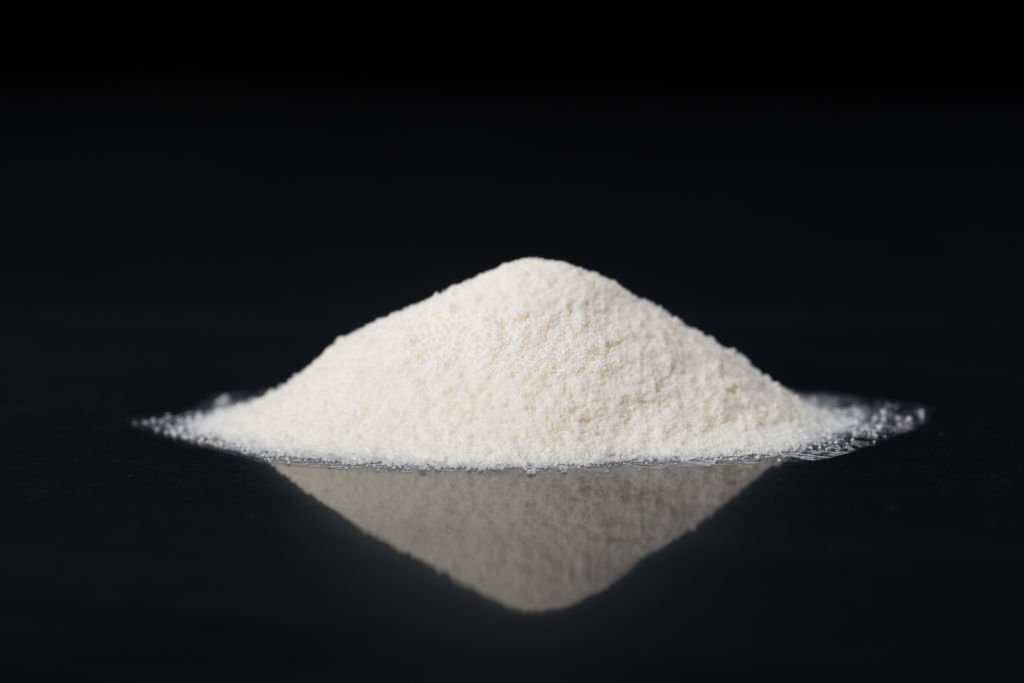If you’ve ever read the nutrition labels on packaged foods, you might have come across the word “maltodextrin.”
You might have also noticed that it is almost always listed as one of the ingredients in a product. That’s because this starch-based sugar is used as an additive in many packaged foods.
However, with so many negative things being said about maltodextrin and other food additives, you might be wondering if this additive is safe to eat or not.
But what exactly is maltodextrin? Are there any health risks associated with it? Is it good or bad for you? Keep reading to find out more!
What is Maltodextrin?
Maltodextrin is a processed food ingredient made from starch. It is not the same as whole-grain oats or corn. Because it is highly processed, it is also high in calories and low in nutritional value.
Maltodextrin is often used as a food additive or thickener in many processed foods. It can also be used to enhance the flavor of some foods.
Maltodextrin is a white powder that is easily dissolved in water. As a food additive, it is often added to self-rising flour to make pancakes and waffles fluffier.
It is also used as a thickener in soups, sauces, and salad dressings. It may also be used as a substitute for sugar in many foods.
Good Things About Maltodextrin
Maltodextrin is very unlikely to cause allergies, so it can be used in foods that need to be free of all allergens.
Maltodextrin can be used to replace fat in foods to reduce their calories. It is often used in reduced-fat versions of snack foods like chips, crackers, and cookies.
Maltodextrin is also used as a way to reduce fat in reduced-fat salad dressings. Because it’s a starch, maltodextrin is a complex carbohydrate.
That means it can be slowly and steadily broken down into sugar by your body for a slow and steady source of energy. This is useful for athletes as it can help them to avoid crashing during a competition.
Bad Things About Maltodextrin
Maltodextrin is processed sugar, which can lead to weight gain, high blood sugar, and increased risk for diabetes.
Although it is a complex carbohydrate, it is broken down into sugar very quickly, so it does not offer sustained energy.
Maltodextrin is often made with genetically modified organisms (GMOs) and is low in nutrients. It is very unlikely that there are any health benefits associated with it.
Maltodextrin is high in calories and low in nutritional value. It is made from corn, wheat, or rice starch that is broken down into simple sugars, which are then dried.
Maltodextrin may also be made with genetically modified corn.
Is Maltodextrin Actually Bad for You?
Maltodextrin is not good for you, but it’s not bad for you, either. It’s simply a processed food ingredient that offers no nutritional benefits. Because it is a processed food ingredient, maltodextrin is not whole food.
It is not made from one ingredient but rather many ingredients that are processed together.
For this reason, it is better to eat foods that contain whole ingredients instead of foods that contain processed ingredients like maltodextrin.
The fact that it is not whole food means it is low in nutrients. It is also high in calories and low in fiber.
Because it is made from simple sugars, it is broken down into glucose in the body, which leads to high blood sugar.
How to Know if a Product Contains Maltodextrin
If you want to know what’s really in the food you are eating, you need to read the nutrition label.
Maltodextrin is an ingredient that will probably be listed in the ingredients section. The nutrition label will tell you how much of the ingredient is in each food serving.
It will also tell you how many calories and grams of fat each serving contains.
You can also visit websites like Food.net to search for the product and see what ingredients are listed.
If a product contains processed ingredients like maltodextrin, it’s usually in the ingredients list near the top of the label. The ingredients are listed in order by their percentage. Look for the word “maltodextrin” and see if it is listed high on the label.
The Bottom Line
Maltodextrin is a processed food ingredient often added to foods as a thinning or bulking agent. It is also used as a flavoring agent and a sweetener.
Because it is not whole food, it is low in nutrients. It is also high in calories and low in fiber.
Furthermore, as it is processed from a combination of starches and sugar, it is an easy way to add calories and sweeteners to foods without adding any other nutritional value.
However, studies have shown that when maltodextrin is used to replace sugar, people tend to eat more and gain weight, especially if the food is sweet.
Although there is not enough research yet to understand exactly why, some studies suggest that the more processed foods you eat, the more likely you are to gain weight.
Adding more processed foods like maltodextrin to your diet may lead to weight gain. That’s why reading the nutrition labels on packaged foods is important.

